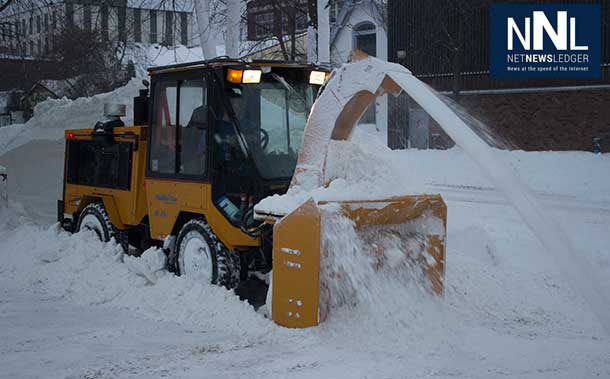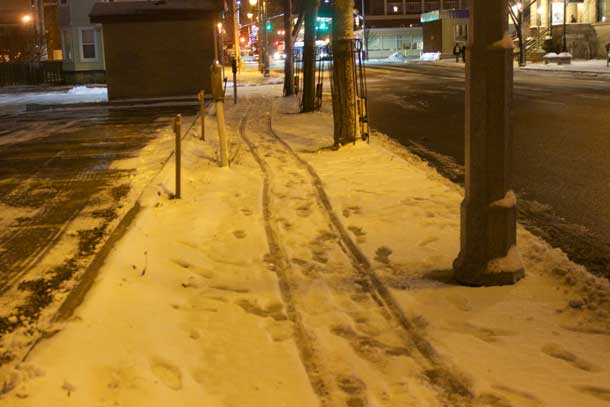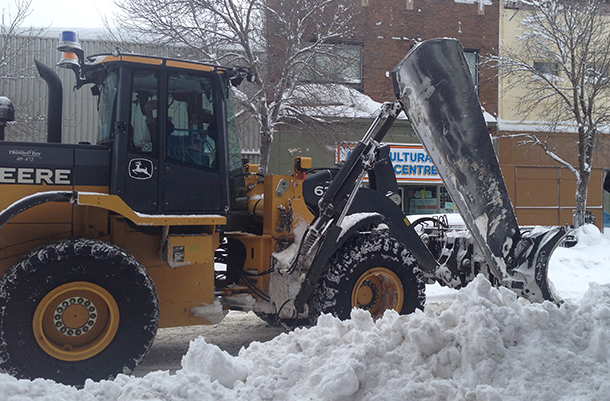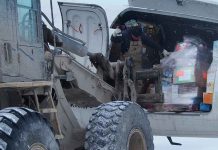
Winter Road Care Subject of Long Court Case
THUNDER BAY – The standards for a municipality to keep roads and sidewalks safe has received notice that there are legal implications for the failure to do so.
In a twenty-six-page ruling, Sudbury Superior Court Justice Robbie Gordon has ruled that the (then) Regional Municipality of Sudbury had not properly treated Regional Road 35 when Lisa Marie Belanger, 20 at the time, lost control of her eastbound 1990 Mazda near Godfrey Drive.
In his ruling, Justice Gordon states, “In this case, the duty of care and the standard of care are prescribed by statute. In particular, section 284(1) of the Municipal Act, R.S.O. 1990 c.M.45 provided that the Council of the corporation that has jurisdiction over a highway or bridge shall keep it in a state of repair that is reasonable in light of all the circumstances, including the character and location of the highway or bridge. Subsection (1.1) provided that in the case of default, the corporation, subject to the Negligence Act, is liable for all damages any person sustains because of the default. Subsection (1.2) provided that the corporation is not liable under subsection (1) or (1.1) if it did not know and could not reasonably have been expected to know about the state of repair of the highway or bridge. Subsection (1.3) provided that the corporation is not liable under subsection (1) or (1.1) for failing to keep a highway or bridge in a reasonable state of repair if it took reasonable steps to prevent the default from arising.”

The car crossed the roadway median sliding into the other lane and colliding with a school bus on November 22, 2000.
Justice Gordon ruled, “The defendant failed to meet its maintenance quality standards when the road, in a winter storm event, was left without maintenance activity for over three hours… That those conditions could result ought to have been known by the employees of the defendant. The winter road design of the defendant fell short of reasonable because of the failure to assign a spare spreader to plow and salt the road, or to require that (an employee) drop salt when he passed through the area of the accident approximately one hour prior to the accident.”
“Had either of these actions been taken the road would not have been in the treacherous condition it was when the accident occurred and it is likely that the accident would not have occurred at all.”
Road and sidewalk conditions in unsafe conditions leave people at risk. In his ruling Justice Gordon has put in place a legal precedent that likely will have a ripple effect across Ontario.
The Regional Municipality of Sudbury no longer exists, it is now part of the Greater City of Sudbury.
Pending a legal appeal, the $12-million-dollar judgment will now fall to Sudbury.
The ruling of Justice Gordon offers interesting reading, and likely will be the subject for many Ontario communities seeking to protect the corporations from legal implications over the standard of snow and ice removal from roads and sidewalks.

Background Facts
[3] The accident took place on RR35 about 400 metres south of Godfrey Road on a bridge that spanned a set of railway tracks. In the vicinity of the accident, RR35 was two lanes with a speed limit of 80 kilometres per hour. It was a busy road, indeed a major arterial road in the Region, estimated to accommodate some 16,000 vehicles per day.
[4] November 22, 2000 was a bitterly cold day. The low temperature was -16 Celsius and the high reached just -11.3. The accident took place at about 11:15 in the morning at which time the temperature was about -11.6 with wind blowing from the north at approximately 25 kilometres per hour. Although little precipitation had initially been forecast for the day, at 8:17 a.m. the forecast changed to anticipate heavier snow.
[5] In the end, total snowfall for the day was 5.7 centimetres. Of this amount, .5 cms fell before 7:00 a.m., 5 cms fell between 7:00 a.m. and 11:00 a.m., and .2 cms fell after 11:00 a.m.
[6] Several people either witnessed the accident or came across the accident shortly after it had occurred. Most of them described RR35 as snow covered and slippery.
[7] The Region had a written quality standard in place for winter road maintenance. Among the stated objectives for winter plowing, sanding and salting was the reduction of hazards of snow and ice conditions to users of the roads. For Class 1 and 2 roads (RR35 was a Class 1 road), the quality standard stated the following:
- Surfaces shall be maintained As Bare As Possible through Continued Use of all assigned men, equipment and materials suited to the conditions.
- The maximum allowable snow accumulation is 1 INCH
- Coverage (either plowing or spreading) intervals shall not be greater than every 2 hours throughout the storm.
- These classes have First Priority
[8] The Region also had in place a “Method and Procedure” for salting roads, streets and lanes. The recommended procedures included the following:
- Spread salt before snow accumulates so that a “brine sandwich” develops. This will prevent snow from sticking to the pavement, removal will be easier and bare pavement will result.
- Cover route as often as possible, but not before the first application has a chance to work (usually 1 hour).
At End of Shift
- Fill gas tanks to prevent condensation.
- Clean equipment after use to prevent corrosion.
- Check equipment. Report service or repair requirements.
- Submit completed crew card to Area Superintendent.





